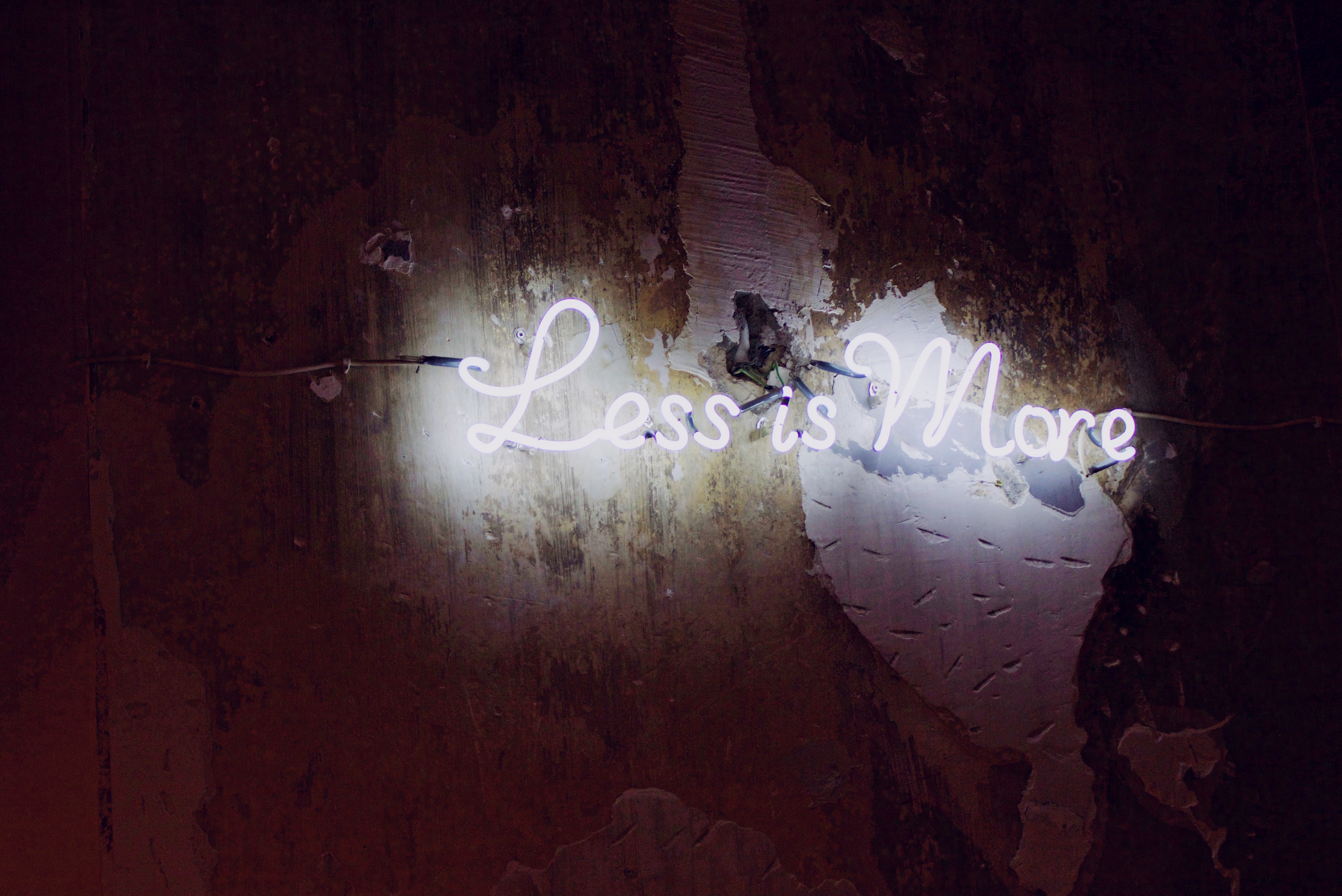How less can be more for yourself, the planet and the people around you
 One morning I was walking with a friend of mine and we were discussing a birthday present which we were planning to buy for a friend. She asked “Why is it that sustainable fashion is always so expensive?” to which I answered: “Well it makes it possible for brands to actually pay their workers a living wage and to make sure they are working under safe conditions. People who buy sustainable fashion know that behind cheap clothing lies a production process characterised by unfair working conditions, wages and environmental ruin. They prefer buying pieces which are made under fair conditions even if it means they will have to pay more money. . It’s a question of priority.” But then I realised that this is not the case at all. In what way, then, should one envisage sustainable fashion and consumerism?
One morning I was walking with a friend of mine and we were discussing a birthday present which we were planning to buy for a friend. She asked “Why is it that sustainable fashion is always so expensive?” to which I answered: “Well it makes it possible for brands to actually pay their workers a living wage and to make sure they are working under safe conditions. People who buy sustainable fashion know that behind cheap clothing lies a production process characterised by unfair working conditions, wages and environmental ruin. They prefer buying pieces which are made under fair conditions even if it means they will have to pay more money. . It’s a question of priority.” But then I realised that this is not the case at all. In what way, then, should one envisage sustainable fashion and consumerism?
Systemic problem
The term ‘ethical consumerism’ – the social component of ‘sustainable consumerism’ if you will – is illustrative of the systemic problem which is present in today’s society, namely that spending your money otherwise is enough in order to ‘change’ something. It defends the idea that when we buy sweaters made from recycled materials, jewellery made out of lab-grown diamonds or reusable coffee cups, companies will eventually give in to consumers’ pressure and that this will change the world for the better, i.e. that the planet will be saved and that (garment) workers will live in excellent conditions. In short, ethical consumerism claims that we can buy our way out of trouble. This, however, is nothing more and nothing less than an illusion. Change can’t directly come from people only buying sustainable products or clothes; apart from consuming, we also need activism and sytemic change.
Lack of regulation
Why? Because even though there are some changes in some countries where some brands manufacture their clothes there are still too many brands who haven’t lived up to their promises[1]. Consuming more ‘ethically’ will not solve this problem. In her article The Twilight of the Ethical Consumer Elizabeth L. Cline (2020) points out that ‘What drives sweatshops is not a consumer demand for sweatshops. It is a lack of proper labour laws to protect garment workers and intense economic concentration that incentivizes the industry to drive down wages’. Us ‘consumers’ who give or don’t give priority to workers’ rights over cheap clothing will not solve the problem, but us ‘citizens’ raising our voices and holding brands accountable for the damage they inflict upon the people who work for them, can.
Accelerated workload
Apart from calling out brands and governments, there is another thing citizens can do which will not only benefit garment workers, but also ourselves and the planet. Consuming less. I wish I could say that garment workers only experience more pressure when the companies they work for organise sales but in the past decade or so one cannot speak of ‘summer sales’ or ‘winter sales’ anymore; rather, we live in a time of ‘permanent sales’. Think about Black Friday, Cyber Monday, and all the mails you receive when brands start to notice that you haven’t shopped with them for more than a month. Sales are everywhere, all the time and this not only leads to garment workers experiencing even more pressure than usual, but also to people ‘buy[ing] things [they] don’t need, with money [they] don’t have to impress people [they] don’t like’, as Dave Ramsey says in his book The Total Money Makeover (2007). Not only is overconsumption causing the workforce to increasingly experience more pressure, it is also the expectation and possibility of orders being delivered within a day or two of purchase. Companies need larger inventories which contributes to garment workers having to work even harder and longer without being paid accordingly.
Explore your own wardrobe
It is time for us to look differently at what we already have and make the best out of that. It is time that we end the idea that consuming more will make us happy and will fulfil our needs. When we continuously accelerate the amount of clothes which we buy , the needs which we think we are fulfilling are not of a physical, biological nature but of a social nature, i.e. they are not essential for our survival but we buy them because we want to be cool, to be ourselves, to gain other people’s attention and even love. Indeed, the way in which we dress helps us build our identity but imagine how many ‘identities’ people would have if they would buy new clothes every single week because they want to keep up with so-called ‘trends’. Companies’ expensive marketing tactics blind us into believing that we constantly need new clothes. We shouldn’t see personalities as trends which can be ‘bought’ but see them as constructs, unique to every individual, and base the way in which we think of people on their actions, not on their purchases. Imagine how much money you could save by just a simple shift in mindset. Sustainable fashion is also about buying less, re-exploring your wardrobe, renting clothes, borrowing and mending. If you combine these different forms sustainable fashion does not necessarily have to be expensive.
“Citizens like you and I must call brands out and hold them accountable for how they treat our planet”
Less is now, also for our planet. In 2017 each Belgian used an equivalent of 6.6 global hectares to meet their needs whereas the earth’s capacity only lies at .82 global hectares per capita (Global Footprint Network et al. 1961-2017). According to Quantis (2016) the footwear and apparel industry are responsible for around 8.1% of global climate impacts. What’s more, ‘every second an equivalent of a truck full of textile is sent to landfill or to incinerators’, Tatiana De Wée, who is the coordinator for Fashion Revolution Belgium, points out in her opinion article for Knack (Ellen McArthur Foundation as cited in De Wée, 2019). It is no secret that clothing consumption has a devastating impact on the environment and that it is essential that we switch to a circular economy model. This shift is partly in the hands of companies but in order for them to really change, citizens like you and I must call them out and hold them accountable for how they treat our planet. The good news is that this is easier than you think. We live in an era where digital activism becomes increasingly important, not only because COVID-19 keeps us from going out on the streets but also because more and more brands are active on social media. To a large extent they rely on earned media, i.e. people’s comments, mentions and reviews of their brand as a way of advertising.
Digital activism
It is our job to use our social platforms to demand systemic social and environmental change in the fashion industry. Each year in the week of 24 April Fashion Revolution Week is organised to commemorate the victims of the Rana Plaza disaster of 2013. It is a week in which people are asked to use hashtags such as #WhoMadeMyClothes and #WhatsInMyClothes to call on brands, but I encourage everyone to use these hashtags all year round, and to make digital activism a part of their lives, not only because it is easy but also because it is more powerful than one would think. Make sure to also sign petitions and send emails to brands – you can find templates for that on the Fashion Revolution website. Be part of leading the cultural shift towards a sustainable fashion system, take pride and above all, enjoy! Your voice counts!
References
De Wée, T. (2019, 8 november). “Hoe kan je roepen om armoede te bannen als je zelfs je eigen kledingarbeiders geen leefloon betaalt?” Knack Weekend. https://weekend.knack.be/lifestyle/mode/hoe-kan-je-roepen-om-armoede-te-bannen-als-je-zelfs-je-eigen-kledingarbeiders-geen-leefloon-betaalt/article-opinion-1529769.html?cookie_check=1612347407
Global Footprint Network, York University, & Footprint Data Foundation. (1961–2017). Open Data Platform [Dataset]. Global Footprint Network. https://data.footprintnetwork.org/#/countryTrends?cn=255&type=BCpc,EFCpc
Cline, E. (2020, 19 oktober). The Twilight of the Ethical Consumer. Atmos. https://atmos.earth/ethical-consumerism/
Quantis. (2018). Measuring Fashion: Environmental Impact of the Global Apparel and Footwear Industry Study. https://quantis-intl.com/wp-content/uploads/2018/03/measuringfashion_globalimpactstudy_full-report_quantis_cwf_2018a.pdf
Ramsey, D. (2007). The Total Money Makeover. Adfo Books.
[1] For more information, check Fashion Revolution’s Fashion Transparency Index 2020: https://www.fashionrevolution.org/about/transparency/








